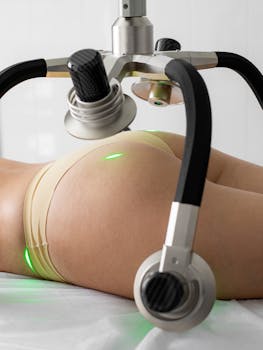After a hip operation, it’s common to notice swelling in the lower leg, and many people specifically ask about a swollen foot after hip operation during recovery. Swelling is part of the body’s inflammation and healing response, but knowing what’s typical and when to seek help can prevent complications and speed your return to normal activity.
Swollen foot after hip surgery — common causes
Immediately after surgery, gravity, fluid shifts, and inflammation can cause feet swelling after hip replacement or other hip procedures. Lymphatic drainage and venous return may be temporarily impaired by reduced mobility, pain-limiting movement, or the positioning used during and after the operation. In some cases, a swollen ankle or swollen ankles after hip surgery appears because of localized soft tissue inflammation, while in others, systemic factors such as heart, kidney, or medication-related fluid retention play a role.
What the swelling looks and feels like
Swollen feet after hip replacement often present as puffiness around the toes, top of the foot, and ankle. The skin may feel tight, look shiny, and press a finger against it may leave a temporary indentation (pitting). If you have a swollen foot after hip replacement and notice redness, increasing warmth, severe pain, or the swelling is only on one leg and getting worse, those signs warrant prompt medical attention because they can suggest infection or a blood clot (deep vein thrombosis).
Typical timeline and how long swelling lasts
Swollen feet after hip surgery commonly peak in the first few days to weeks after the operation and gradually improve over several weeks to a few months. Activity levels, elevation of the leg, use of compression, and following rehabilitation guidance all affect how quickly swelling resolves. If swelling persists beyond expected timelines or worsens, discuss this with your surgeon or physiotherapist.
Managing swelling at home
- Elevate the foot above heart level several times per day to encourage venous return and reduce fluid pooling.
- Gentle ankle pumps and prescribed physical therapy exercises help reduce stiffness and improve circulation; moving as advised reduces the risk of prolonged feet swelling after hip replacement.
- Wear graduated compression socks if recommended by your care team to control excess fluid in the foot and calf.
- Monitor salt intake and follow medication guidance—some pain medicines and IV fluids can increase fluid retention.
- Keep the surgical site clean and watch for signs of infection if you notice increasing redness or drainage.
When to call your care team
Contact your surgeon or primary clinician if you experience sudden or severe swelling, a swollen foot after hip surgery that is one-sided and painful, chest pain, shortness of breath, fever, or signs of infection. These symptoms may indicate a more serious issue such as a blood clot or infection that needs immediate evaluation.
Treatment options clinicians may use
Treatments range from conservative measures—leg elevation, compression, activity modification and physical therapy—to medical interventions when necessary. If a blood clot is suspected, your provider may order an ultrasound and start anticoagulation therapy. For persistent swelling related to lymphatic disruption, specialized therapy such as manual lymphatic drainage can help. Your team will tailor the approach based on whether the swelling is due to surgical inflammation, venous insufficiency, medication, or other systemic causes.
Preventive tips for a smoother recovery
- Follow mobility and exercise instructions from your physiotherapist to prevent stiffness and reduce the chance of prolonged swollen feet after hip surgery.
- Stay hydrated and avoid excessive salt; gradual weight-bearing as directed helps normalize circulation.
- Wear supportive shoes and shoes that accommodate mild foot swelling in the early weeks.
- Keep follow-up appointments so your surgeon can assess healing and address swollen foot after hip operation concerns early.
For guidance on general surgical recovery timelines and tips from a different specialty, see this article: descriptive anchor text. For an overview of hip replacement and common postoperative issues, trusted health resources provide detailed information and patient guidance.
Authoritative clinical information about hip replacement and postoperative care can be found at the National Institute of Arthritis and Musculoskeletal and Skin Diseases: https://www.niams.nih.gov/health-topics/hip-replacement.
Practical notes about related terms
People use many phrases to describe the same problem—swollen foot after hip operation, swollen foot after hip replacement, swollen foot after hip surgery, swollen feet after hip replacement, and swollen feet after hip surgery—all refer to swelling in the lower limb following a hip procedure. Swollen ankles after hip surgery or swelling isolated to one foot may indicate a local issue and should be evaluated sooner rather than later.
- Takeaways:
- Postoperative swelling is common and usually improves with elevation, movement, and time.
- Watch for asymmetry, severe pain, fever, or shortness of breath—these require urgent care.
- Follow rehabilitation, wear compression if advised, and keep follow-up visits to monitor recovery.
FAQ: How long will swelling last?
Most swelling reduces significantly over weeks to a few months after surgery, but some residual swelling may persist longer. Factors such as activity level, adherence to therapy, and individual health conditions influence recovery time.
FAQ: Is one swollen foot worse than both feet swelling?
Yes—one-sided swelling that is new and painful is more concerning than symmetric swelling. Single-leg swelling could indicate deep vein thrombosis or localized infection and should prompt immediate medical assessment.






